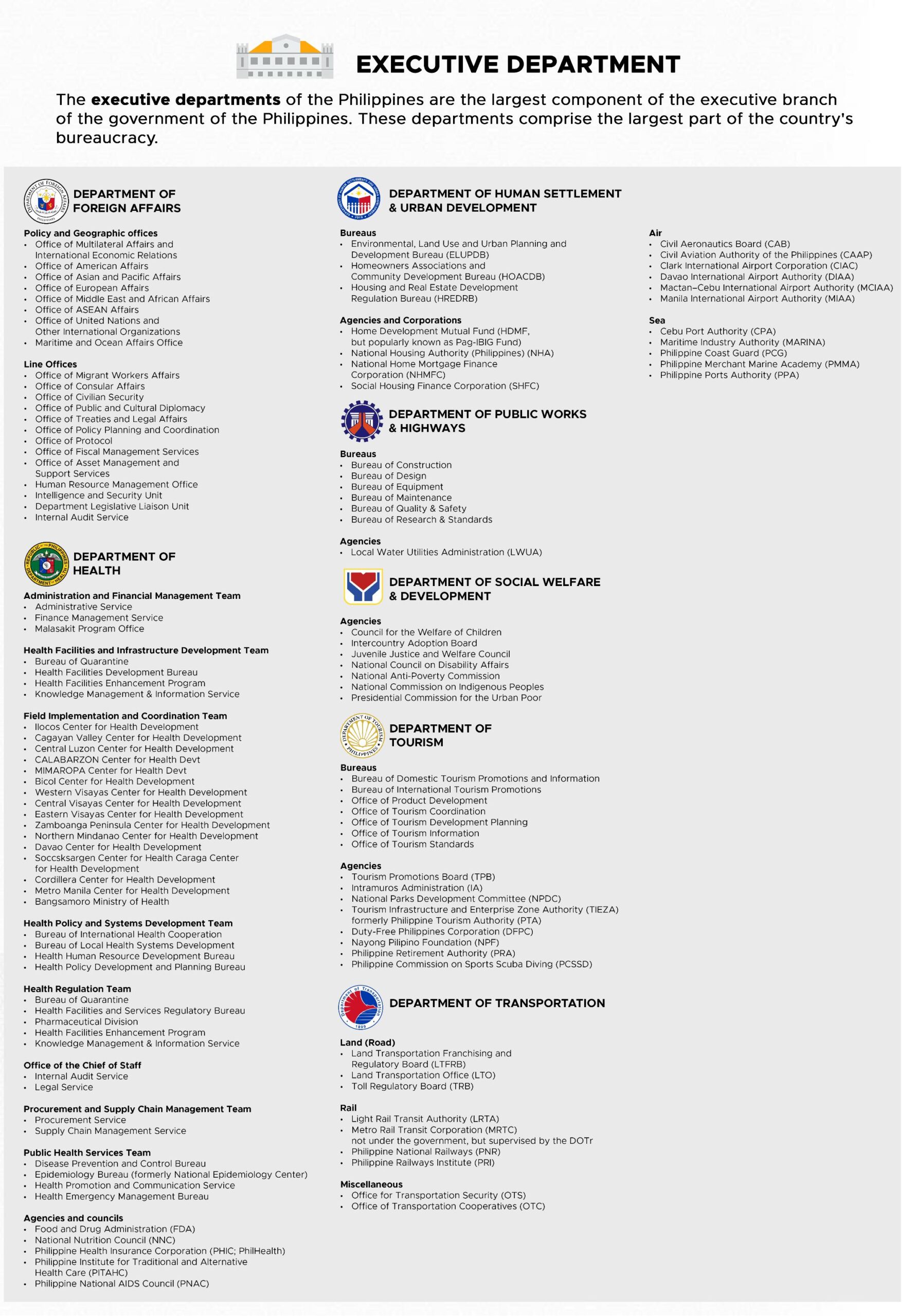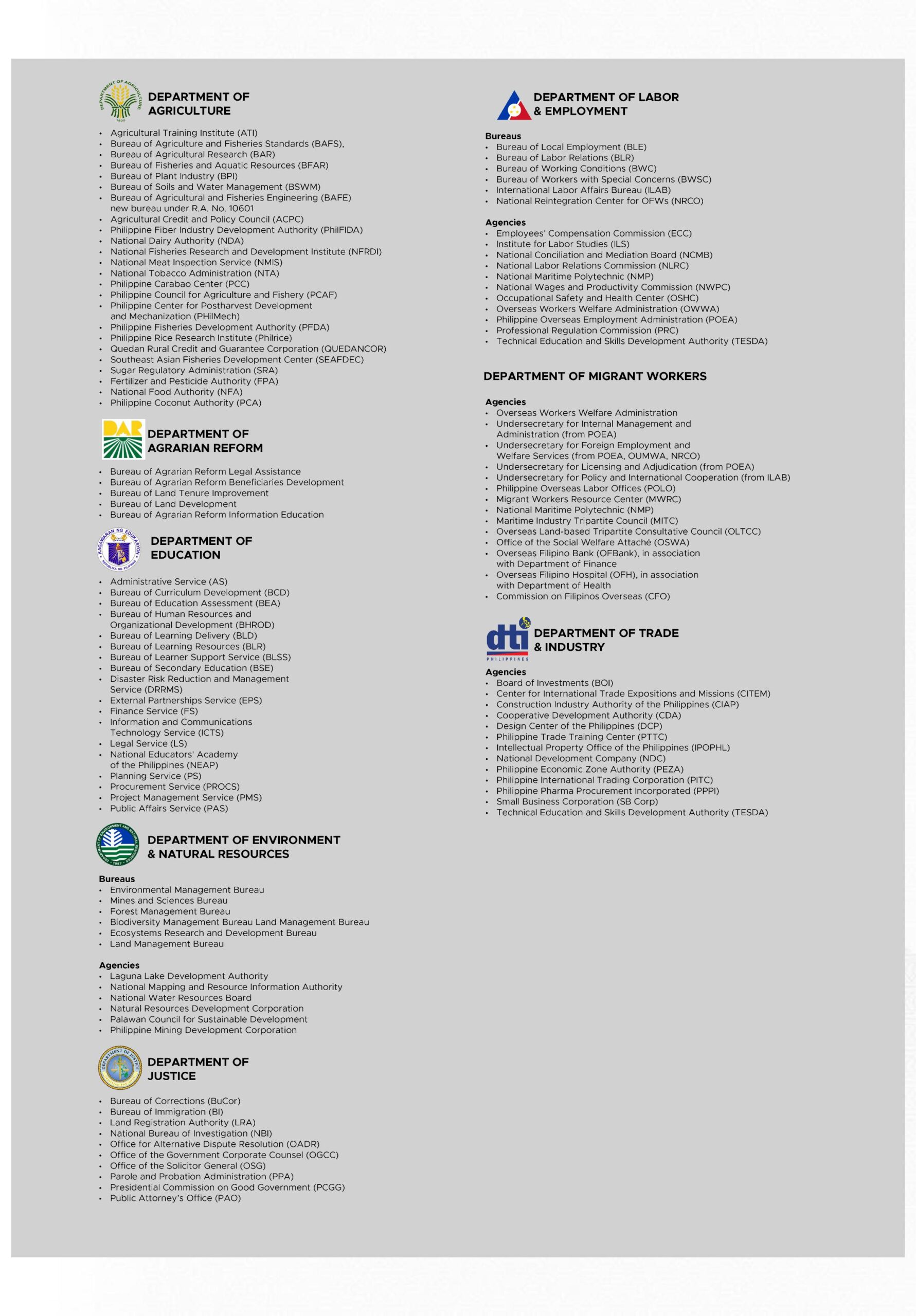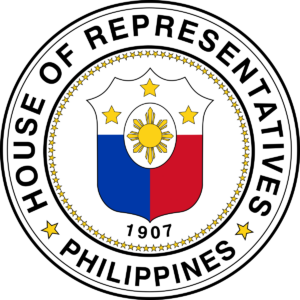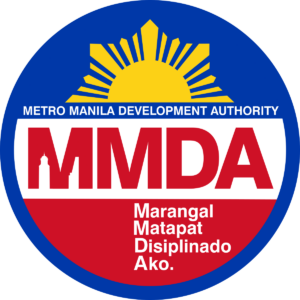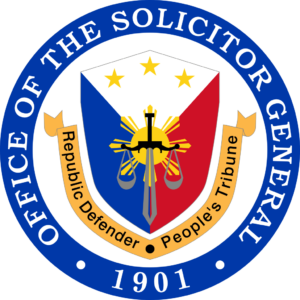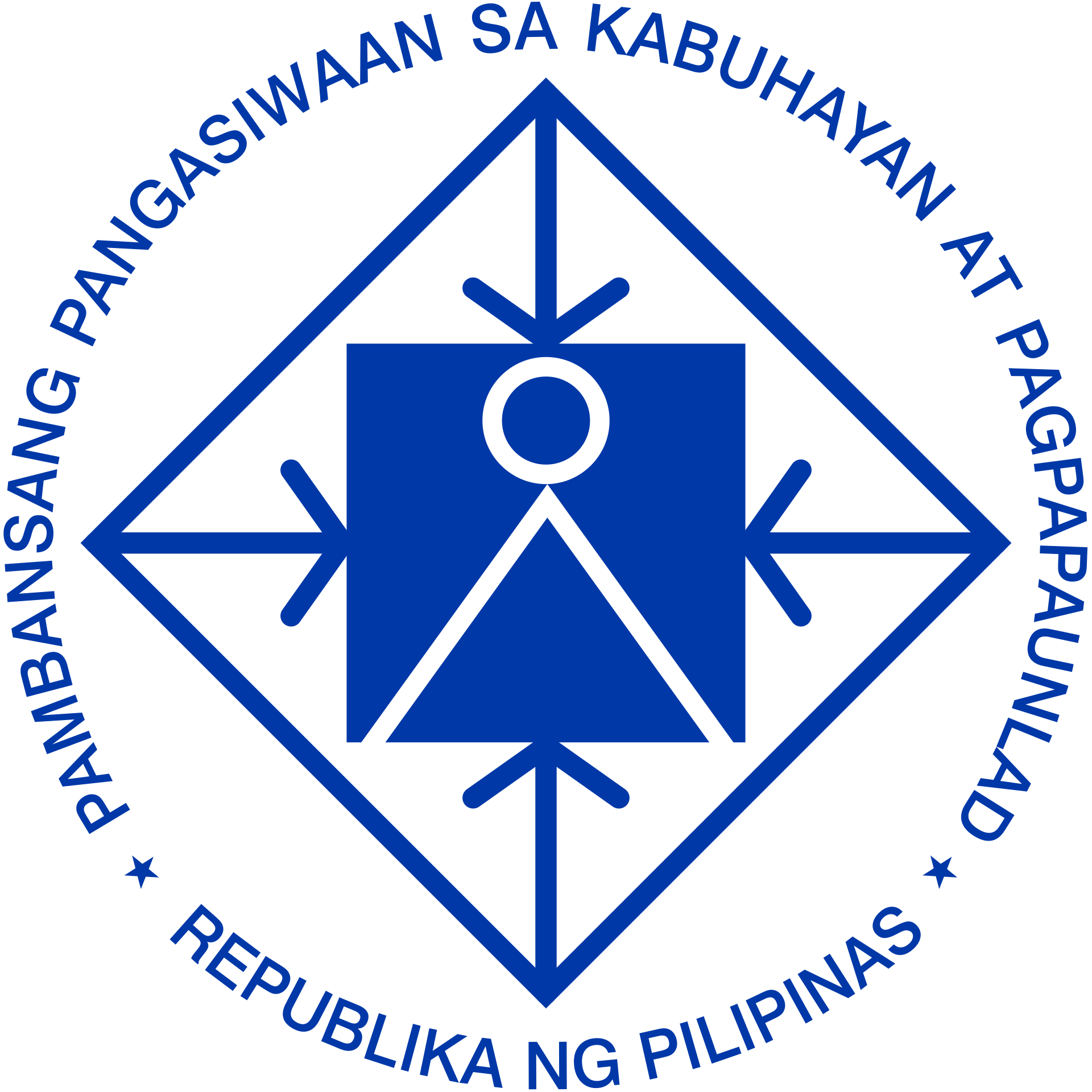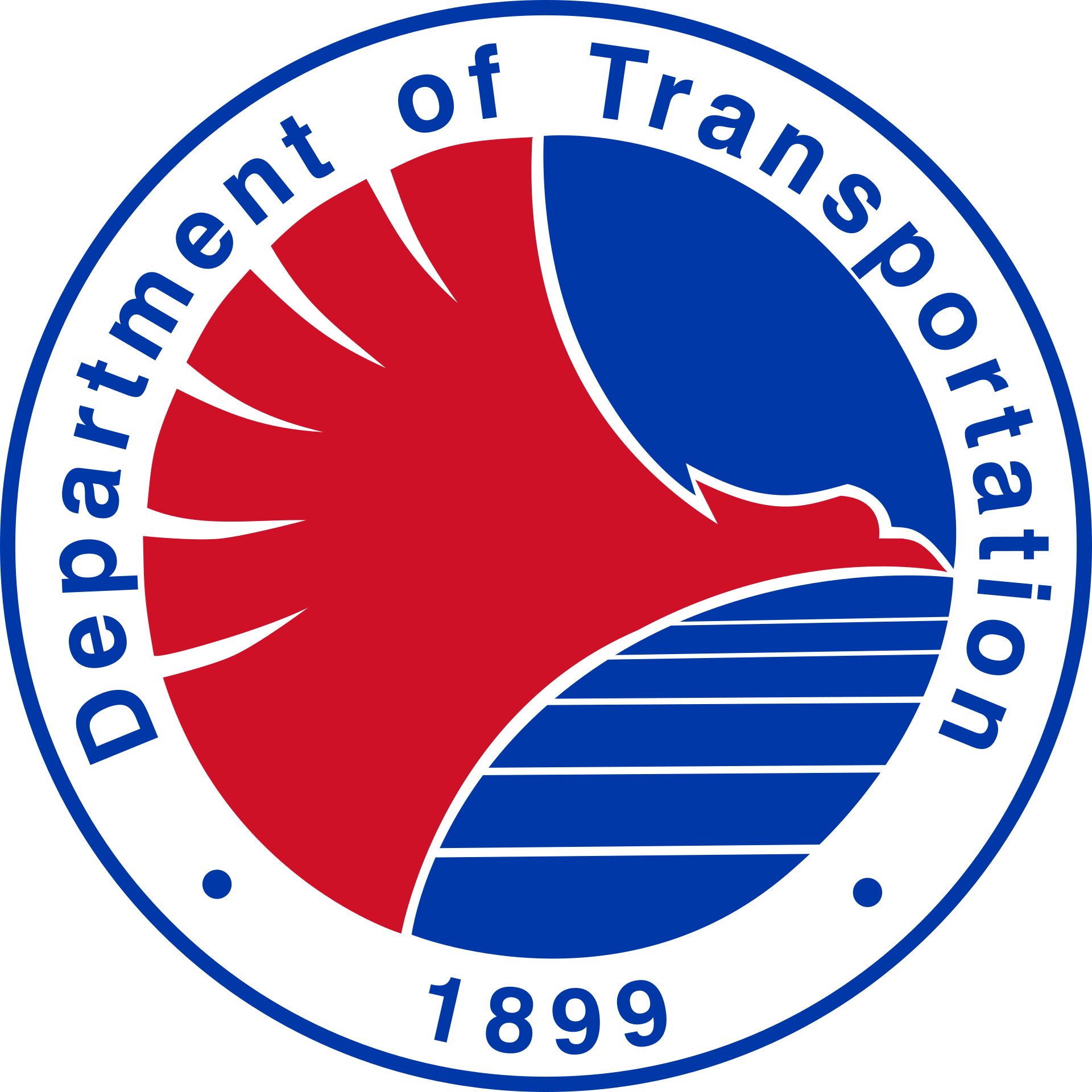GOVERNMENT AGENCIES
Secretaries of the Government (Malolos Republic)
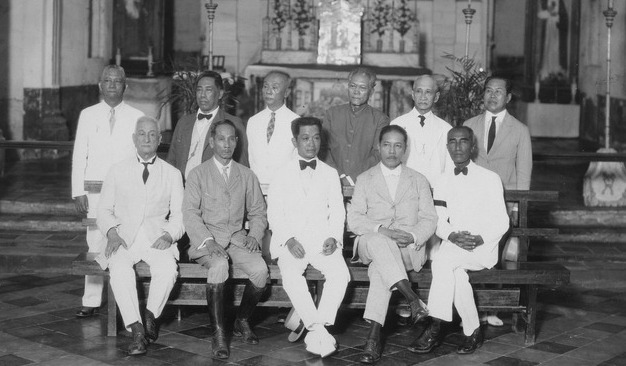
After the Pact of Biak-na-Bato, the leadership of the Philippine Revolution, led by General Emilio Aguinaldo, move into exile in Hong Kong. While in exile, the revolutionaries continued their actions towards Philippine Independence through the Comite Central Ejecutivo which represented the Revolutionary Government in Exile. This Junta organized the purchase of arms, fund drives, and coordinated with other foreign powers for aid in their quest for Philippine independence. Repudiation of the Pact of Biak-na-Bato, due to the treachery of the Spanish Colonial Government, and the outbreak of the Spanish-American War spurred the Filipino revolutionaries to return home in May 1898. Successive victories against war-weary Spanish forces inspired Aguinaldo, through his legal adviser Ambrosio Rianzares Bautista, to proclaim Philippine Independence from his home in Kawit, Cavite on 12 June 1898. Not long after, on 18 June 1898, Aguinaldo issued a decree that created the Gobierno Dictatorial or Dictatorial Government wherein he assumed the office of Dictator. In the same decree, he ordered the establishments of Local Governments through popular elections and laid out the process for the creation of the Revolutionary Congress, the official representative body of the Dictatorial Government.
Upon the advice of Apolinario Mabini, who replaced Bautista as adviser, Aguinaldo, the president of the Philippines, issued a new decree on 23 June 1898 in Kawit, Cavite. It established the Revolutionary Government (Pamunoang Tagapagbangong Puri) as a preparatory government imbued with democratic principles such as the local elections, consultative bodies, and assurance of human rights which were not present in the previous Philippine Dictatorial Government. This government established a functioning executive branch and laid down the structure of the Armed Forces of the Philippines, the Philippine Congress, and Philippine diplomacy. Two underlying principles motivated the establishment of a revolutionary government: to help the country achieve true independence and pave the way towards the formation of a “true republic”.
In view of this change in perspective was a new office, President of the Revolutionary Government, which he assumed on the same day. The President is the personification of the Filipino people in this organic law.
Creation of the First Government Departments
As part of the reorganization and creation of the Revolutionary Government, Aguinaldo disestablished all previously created offices and departments from 1897 to 1898 and created four secretarias or departments of government, namely:
- Relaciones exteriores, Marina, y Commercio (Foreign Affairs, Navy, and Commerce)
- Guerra y Fomento (War and Public Works)
- Policia y Orden interior, Justicia, Instruccion, y Higiene (Police and Internal Order, Justice, Education, and Hygiene)
- Hacienda y Industria (Finance, Agriculture, and Industry)
These secretarias were led by Secretaries appointed by the President who issued decrees and orders in their name and office and whose principal function was to assist the President in the administration of the nation in the branch that it has jurisdiction in.
Each department was further divided into the following bureaus and sections:
- Foreign Affairs, Navy, and Commerce
- Bureau of Foreign Affairs
- Bureau of the Navy
- Bureau of Commerce
- War and Public Works
-
- Bureau of War
- Military Operations Section
- Military Justice Section
- Military Administration Section
- Military Engineering and Artillery Section
- Bureau of Public Works
- Public Works Section
- Bureau of War
- Police and Internal Order, Justice, Education, and Hygiene
- Bureau of Police and Internal Order
- Bureau of Communications
- Public Instruction Section
- Bureau of Hygiene
- Bureau of Justice
- Bureau of Civil Registry
- Finance, Agriculture, and Industry
- Agriculture and Industry Section
- Finance Section
Aguinaldo appointed the first secretario through a decree dated 15 July wherein the following persons assumed the following offices:
A. Baldomero Aguinaldo – Secretary of War and Public Works
B. Leandro Ibarra – Secretary of the Interior
C. Mariano Trias – Secretary of Finance
Another decree on 26 September 1898, further clarified and reorganized the departments as follows:
- Foreign Affairs, Navy, and Commerce
- Bureau of Foreign Affairs
- Bureau of the Navy
- Bureau of Commerce
- War
- Military Operations Section
- Military Justice Section
- Military Administration Section
- Military Engineering and Artillery Section
- Public Works (Fomento)
- Bureau of Education
- Bureau of Agriculture and Industry
- Bureau of Public Works
- Police and Internal Order and Hygiene
- Bureau of Police and Internal Order
- Bureau of Communications
- Bureau of Hygiene
- Justice and Civil Registry
- Bureau of Justice
- Bureau of Civil Registry
- Finance and Industry
These 6 original departments formed the foundations for the following present day successor agencies:
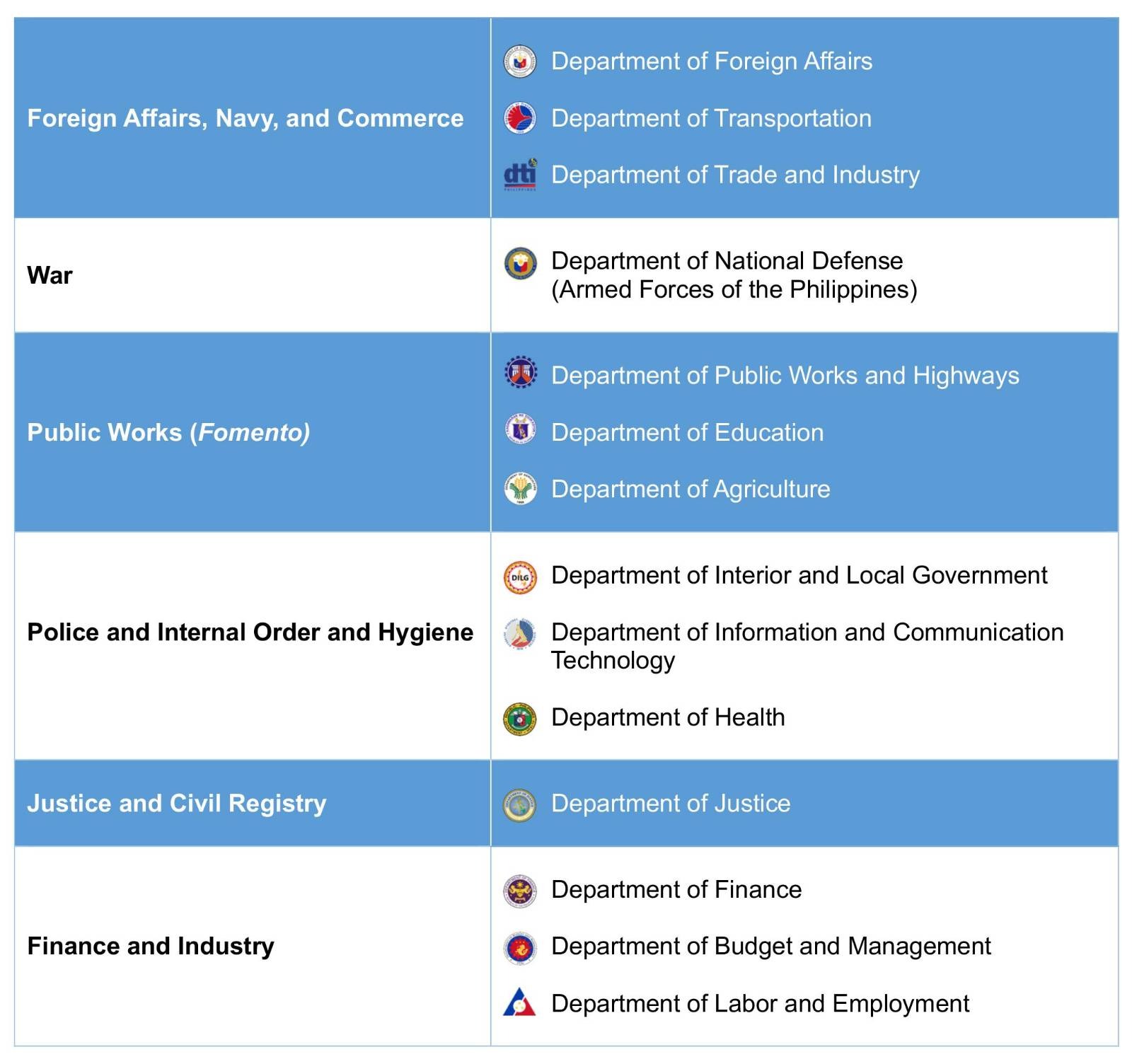
Assembly of the Representatives
Revolutionary Congress created by the June 18 decree had several aims: to promote the interest of the Filipinos through the passage of relevant laws and to serve as the Executive’s advisory body. the appointment of delegates to the Revolutionary Congress from the non-liberated provinces, to ensure wider representation, and the creation of the Executive Board of the Revolutionary Committee at Hong Kong, which served as the diplomatic and international propaganda arm of the Republic.
Among its powers are as follows: to work for the general welfare of the Filipino people, to implement the laws of the revolution, to discuss and vote upon said laws, to review and approve all treaties and loans, and to examine and approve the annual appropriations from the Secretary of Finance annually. It called for public transparency and participation and served as the repository of honor for the country.
Supreme Court
Under the Constitution of the First Philippine Republic, judicial power was vested in a system of courts that was administered by Supreme Court and led by a Chief Justice. However, the circumstances of war prevented the appointment of a Chief Justice during the life of the First Republic. The Supreme Court was first formally organized under American Rule with Cayetano Arellano as the First Chief Justice.
Government Agencies History
Upon the advice of Apolinario Mabini, Emilio Aguinaldo, the president of the Philippines, established the Philippine Revolutionary Government on 23 June 1898 in Kawit, Cavite. It was a preparatory government imbued with democratic principles such as the local elections, consultative bodies, and assurance of human rights which were not present in the previous Philippine Dictatorial Government. This government established a functioning executive branch and laid down the structure of the Armed Forces of the Philippines, the Philippine Congress, and Philippine diplomacy.
Office of the President of the Philippines
While the term “President” was already in use previously during the Revolutionary Government, the position “President of the Republic” was only formally established under the Malolos Constitution, with Emilio Aguinaldo as the first President of the Republic.
National Assembly
The Malolos Congress convened in Barasoain on 15 September 1898 was later formally called as the unicameral Assembly of the Representatives of the Nation, which exercised legislative power under the Malolos Constitution. Our bicameral legislative bodies today – the Congress and the Senate – are the successors of the Assembly.
NGA: Congress and Senate (Co- Leads)
Supreme Court of Justice
The Malolos Constitution provided for a Supreme Court of Justice, where the exercise of judicial power resides. President Aguinaldo proposed the appointment of Apolinario Mabini as Chief Justice but the appointment and the convening of the Supreme Court of Justice never materialized because of the Philippine-American War. It is the equivalent of today’s Supreme Court.
NGA: Supreme Court (Lead) and Lower Courts
Secretaryship of Foreign Relations
The Secretaryship of Foreign Relations was among the portfolio positions created by the Malolos Congress as part of the Council of Government. It is the recognized predecessor of today’s Department of Foreign Affairs. The first Secretary of Foreign Relations under the Malolos Constitution was Apolinario Mabini.
NGA: DFA (Lead) and Foreign Service Posts (FSPs)
Secretaryship of the Interior
The Secretaryship of the Interior was also created as part of the Council of Government under the Malolos Congress. Over the years, it has included in its portfolio the Police and Internal Order, Local Government, and Community Development. Its main successor agencies today are the Department of Justice and the Department of the Interior and Local Government. The first Secretary of Interior under the Malolos Constitution was Teodoro Sandiko.
NGA: DOJ and DILG (Co-Leads); DOH, DOLE, DSWD, DHSUD, MMDA, NCMF, OSG, TESDA, and PhCC
Secretaryship of Finance
The Finance portfolio was first established as the Treasury Department under the Biak-na-Bato Constitution. It was named as the Secretaryship of Finance under the Malolos Constitution. Its main successor agency today is the Department of Finance. The first Secretary of Finance under the Malolos Constitution was Mariano Trias.
NGA: DBM (Lead), DBM, NEDA, MinDA, GCG, and BSP
Secretaryship of the War and Navy
The War and Navy portfolio was also created under the Malolos Constitution. Unlike the other portfolios, it was not recreated until 1939, when the Commonwealth established the Department of National Defense in 1939. The first Secretary of the War and Navy under the Malolos Constitution was Baldomero Aguinaldo.
An “Academia Militar” was also established by Aguinaldo, which is the predecessor of today’s Philippine Military Academy.
NGA: DND (Lead) and NSC
Secretaryship of Public Instruction
The Secretaryship of Public Instruction is one of two Council portfolios which had no separate portfolios under the Biak-na-Bato or Revolutionary Governments. Around this time, the Malolos Congress also established the secular Literary University of the Philippines (19 October 1898). Its main successor agency is the Department of Education.
NGA: DepEd (Lead); DOST, CHED, NCCA, UP System, and PhilSA
Secretaryship of Public Works and Communications
This secretaryship was born from the decision of the framers of the Malolos Constitution to divide the original portfolio of “War and Public Works”. The main successor agency of this department are the Department of Public Works and Highways and the Department of Information and Communications Technology.
NGA: DPWH and DICT (Co-Leads); DOTr
Secretaryship of Agriculture, Industries and Commerce
The seventh secretaryship created under the Malolos Constitution was the Secretaryship of Agriculture, Industries and Commerce, which was separated from the Finance portfolio originally established in the revolutionary government.
NGA: DA and DTI (Co-Leads); DENR, DAR, DOT, DOE, ARTA, and CCC

